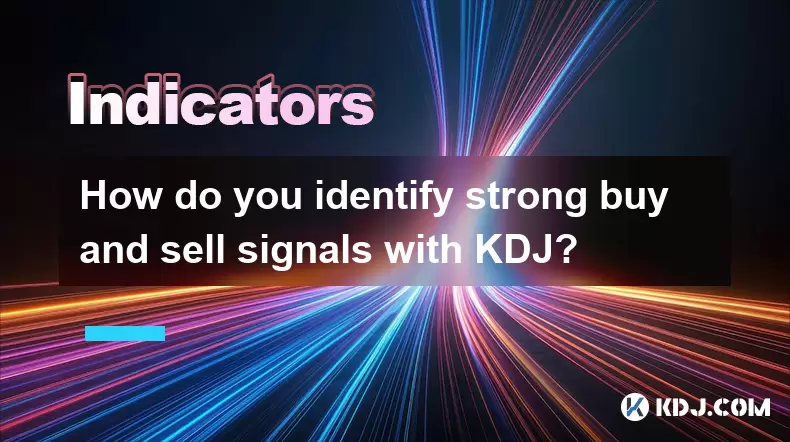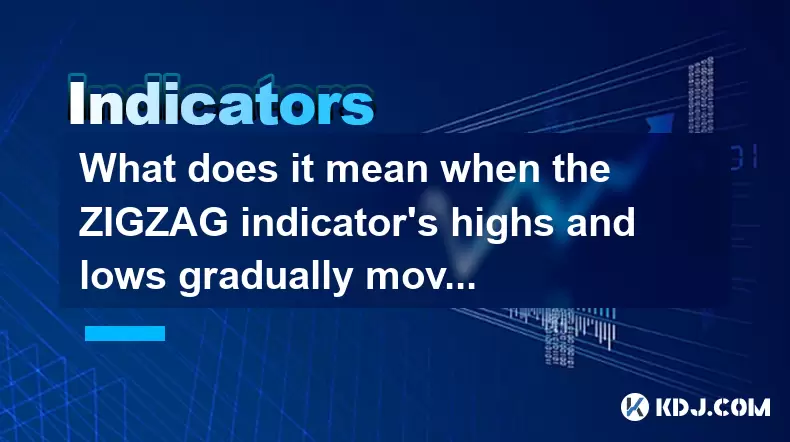-
 Bitcoin
Bitcoin $116600
0.12% -
 Ethereum
Ethereum $4259
5.24% -
 XRP
XRP $3.269
-0.80% -
 Tether USDt
Tether USDt $1.000
0.00% -
 BNB
BNB $805.6
1.49% -
 Solana
Solana $182.0
2.27% -
 USDC
USDC $0.9999
0.01% -
 Dogecoin
Dogecoin $0.2433
6.92% -
 TRON
TRON $0.3361
-0.83% -
 Cardano
Cardano $0.8176
2.77% -
 Hyperliquid
Hyperliquid $43.93
7.66% -
 Chainlink
Chainlink $21.35
9.11% -
 Stellar
Stellar $0.4516
-0.51% -
 Sui
Sui $3.953
2.85% -
 Bitcoin Cash
Bitcoin Cash $572.6
-2.63% -
 Hedera
Hedera $0.2665
1.63% -
 Avalanche
Avalanche $24.50
3.23% -
 Ethena USDe
Ethena USDe $1.001
0.01% -
 Litecoin
Litecoin $121.7
-3.25% -
 Toncoin
Toncoin $3.420
2.01% -
 UNUS SED LEO
UNUS SED LEO $9.006
0.22% -
 Shiba Inu
Shiba Inu $0.00001387
4.90% -
 Uniswap
Uniswap $10.99
-0.28% -
 Polkadot
Polkadot $4.134
4.21% -
 Dai
Dai $1.000
0.00% -
 Pepe
Pepe $0.00001243
4.80% -
 Bitget Token
Bitget Token $4.509
0.19% -
 Cronos
Cronos $0.1576
2.00% -
 Monero
Monero $275.8
1.20% -
 Ethena
Ethena $0.7594
15.99%
How do you identify strong buy and sell signals with KDJ?
The KDJ indicator helps crypto traders spot buy/sell signals using %K, %D, and %J lines, with strong buy setups when lines cross up from below 20 and sell signals when crossing down from above 80.
Aug 06, 2025 at 12:07 am

Understanding the KDJ Indicator in Cryptocurrency Trading
The KDJ indicator is a momentum oscillator widely used in cryptocurrency trading to identify potential buy and sell signals. It is derived from the Stochastic Oscillator and consists of three lines: %K, %D, and %J. These lines help traders assess the current market momentum and determine whether an asset is overbought or oversold. The KDJ indicator operates within a range of 0 to 100, making it easier to interpret extreme conditions. When the values exceed 80, the market is typically considered overbought, signaling a potential sell opportunity. Conversely, values below 20 suggest the market is oversold, indicating a possible buy signal.
The %K line represents the raw momentum, calculated based on the closing price relative to the high-low range over a specific period, usually 9 periods. The %D line is a moving average of %K, often smoothed over 3 periods, and acts as a signal line. The %J line is calculated as 3 × %K – 2 × %D, making it more sensitive and volatile. Traders monitor the crossovers and divergences between these lines to anticipate price reversals.
Identifying Strong Buy Signals with KDJ
To detect a strong buy signal using the KDJ indicator, traders look for several key patterns:
- A crossover of %K above %D when both lines are below 20 indicates a potential reversal from oversold conditions.
- The %J line dropping below 0 and then rising back above it can signal extreme oversold momentum and an imminent upward correction.
- Bullish divergence occurs when the price makes a lower low, but the KDJ forms a higher low, suggesting weakening downward momentum.
- A simultaneous upward turn of all three lines from the oversold zone (below 20) reinforces the strength of the buy signal.
When these conditions align, especially on higher timeframes like the 4-hour or daily chart, the reliability of the buy signal increases. For example, on Bitcoin’s 4-hour chart, if the KDJ lines rise from below 20 with %K crossing above %D and the price begins to form higher lows, it may indicate accumulation by buyers.
Recognizing Strong Sell Signals with KDJ
Strong sell signals in the KDJ framework appear under opposite conditions:
- A crossover of %K below %D while both lines are above 80 suggests a reversal from overbought territory.
- The %J line surging above 100 and then turning downward may indicate excessive bullish momentum that is unsustainable.
- Bearish divergence happens when the price reaches a higher high, but the KDJ forms a lower high, warning of weakening upward momentum.
- All three lines turning downward from above 80, particularly when %J starts to fall from extreme levels, supports a strong sell setup.
These signals are more credible when confirmed by volume spikes or resistance levels. For instance, on Ethereum’s daily chart, if the KDJ peaks above 80 and %K crosses below %D while trading volume increases, it could signal profit-taking by large holders.
Optimizing KDJ Settings for Cryptocurrency Volatility
Cryptocurrencies exhibit higher volatility compared to traditional assets, so default KDJ settings (9,3,3) may generate excessive false signals. Adjusting the parameters can improve accuracy:
- Increasing the %K period to 14 helps smooth out noise in fast-moving markets like Solana or Dogecoin.
- Using a slower %D (5-period moving average) reduces premature crossovers.
- Applying the KDJ on multiple timeframes—such as 1-hour, 4-hour, and daily—helps confirm signals across different horizons.
To modify KDJ settings on TradingView:
- Open the chart of the desired cryptocurrency.
- Click “Indicators” at the top and search for “KDJ.”
- Select the indicator and click “Settings.”
- Change the “K Length” to 14, “D Smoothing” to 5, and “J Multiplier” to 3.
- Click “OK” to apply.
This customization reduces whipsaws during sideways markets and enhances signal reliability during trending phases.
Combining KDJ with Other Technical Tools
Using KDJ in isolation can lead to misleading signals, especially in ranging or choppy markets. Integrating it with other tools improves decision-making:
- Support and resistance levels: A KDJ buy signal near a strong support zone, such as a previous swing low in BNB, adds confirmation.
- Moving averages: A bullish KDJ crossover occurring when the price is above the 50-period EMA strengthens the buy case.
- Volume analysis: Increasing volume during a KDJ reversal suggests institutional participation.
- RSI or MACD: Converging signals from RSI (e.g., RSI exiting oversold) and KDJ increase confidence.
For example, if Cardano’s price bounces off the 200-day MA, the KDJ exits oversold, and MACD turns positive, the combined evidence supports a high-probability long entry.
Common Pitfalls and How to Avoid Them
Even effective indicators like KDJ have limitations in crypto markets:
- False signals in sideways markets: KDJ may oscillate between overbought and oversold without clear trends. Avoid trading every crossover; instead, wait for breakout confirmation.
- Lagging nature: Since KDJ relies on past prices, it may react slowly to sudden news, such as regulatory announcements affecting XRP.
- Over-reliance on extreme values: Staying above 80 or below 20 for extended periods during strong trends does not guarantee reversal. Use trend-following tools to determine market bias.
To mitigate these issues:
- Filter signals using price action patterns, such as bullish engulfing or pin bars.
- Apply KDJ on higher timeframes to avoid noise from short-term volatility.
- Set alerts on TradingView for %K-%D crossovers only when they occur near key levels.
Frequently Asked Questions
What does a %J value above 100 indicate in KDJ analysis?
A %J value exceeding 100 suggests extreme overbought conditions and potential exhaustion of upward momentum. It often precedes a pullback, especially if accompanied by a bearish candlestick pattern or resistance rejection.
Can KDJ be used effectively on 5-minute cryptocurrency charts?
Yes, but with caution. The high sensitivity of KDJ on lower timeframes increases false signals. It is advisable to combine it with volume filters and use it only during high-liquidity periods, such as during U.S. or European trading sessions.
How do you interpret a KDJ crossover when the lines are between 20 and 80?
Crossovers in the neutral zone (20–80) are generally less reliable and may indicate consolidation. Traders should wait for the lines to exit oversold or overbought zones before acting on crossovers.
Is KDJ suitable for all cryptocurrencies?
KDJ works best on highly liquid cryptocurrencies like Bitcoin and Ethereum, where price movements are less prone to manipulation. For low-cap altcoins with erratic price swings, KDJ signals may be less trustworthy due to volatility and low trading volume.
Disclaimer:info@kdj.com
The information provided is not trading advice. kdj.com does not assume any responsibility for any investments made based on the information provided in this article. Cryptocurrencies are highly volatile and it is highly recommended that you invest with caution after thorough research!
If you believe that the content used on this website infringes your copyright, please contact us immediately (info@kdj.com) and we will delete it promptly.
- Solana Meme Coin Presales: Hype or the Next Big Thing?
- 2025-08-10 02:50:12
- Pi Network, Altcoin Season, and Breakout Tokens: What's Hot in 2025?
- 2025-08-10 02:50:12
- Decoding Crypto Presales: Is Cold Wallet the New Neo Pepe?
- 2025-08-10 02:30:12
- PEPE's Moonshot Ambitions: Will the Memecoin Rally Continue?
- 2025-08-10 03:50:11
- Dogecoin, ROI, and the Meme Coin Mania: Is Little Pepe the Next Big Thing?
- 2025-08-10 03:50:11
- Cryptos, 2025, Market Caps: Riding the Next Wave
- 2025-08-10 02:30:12
Related knowledge

What does it mean when the price is trading above the SAR indicator but the red dots are densely packed?
Aug 09,2025 at 11:49pm
Understanding the SAR Indicator and Its Visual SignalsThe SAR (Parabolic Stop and Reverse) indicator is a technical analysis tool used primarily to de...

What does it mean when the MACD histogram continues to shorten but the price reaches a new high?
Aug 09,2025 at 09:29pm
Understanding the MACD Histogram and Its ComponentsThe MACD (Moving Average Convergence Divergence) indicator is a widely used technical analysis tool...

What does it mean when the Triple Moving Average (TRIX) turns downward but the price doesn't fall?
Aug 09,2025 at 12:42pm
Understanding the Triple Moving Average (TRIX) IndicatorThe Triple Moving Average, commonly known as TRIX, is a momentum oscillator designed to filter...

What does it mean when the 10-day and 30-day moving averages repeatedly intertwine?
Aug 10,2025 at 02:42am
Understanding Moving Averages in Cryptocurrency TradingMoving averages are among the most widely used technical indicators in the cryptocurrency tradi...

What does it mean when the CCI indicator continues to hover below -100?
Aug 10,2025 at 04:21am
Understanding the CCI Indicator and Its Baseline ValuesThe Commodity Channel Index (CCI) is a momentum-based oscillator used in technical analysis to ...

What does it mean when the ZIGZAG indicator's highs and lows gradually move downwards?
Aug 10,2025 at 02:14am
Understanding the ZIGZAG Indicator in Cryptocurrency TradingThe ZIGZAG indicator is a popular technical analysis tool used by cryptocurrency traders t...

What does it mean when the price is trading above the SAR indicator but the red dots are densely packed?
Aug 09,2025 at 11:49pm
Understanding the SAR Indicator and Its Visual SignalsThe SAR (Parabolic Stop and Reverse) indicator is a technical analysis tool used primarily to de...

What does it mean when the MACD histogram continues to shorten but the price reaches a new high?
Aug 09,2025 at 09:29pm
Understanding the MACD Histogram and Its ComponentsThe MACD (Moving Average Convergence Divergence) indicator is a widely used technical analysis tool...

What does it mean when the Triple Moving Average (TRIX) turns downward but the price doesn't fall?
Aug 09,2025 at 12:42pm
Understanding the Triple Moving Average (TRIX) IndicatorThe Triple Moving Average, commonly known as TRIX, is a momentum oscillator designed to filter...

What does it mean when the 10-day and 30-day moving averages repeatedly intertwine?
Aug 10,2025 at 02:42am
Understanding Moving Averages in Cryptocurrency TradingMoving averages are among the most widely used technical indicators in the cryptocurrency tradi...

What does it mean when the CCI indicator continues to hover below -100?
Aug 10,2025 at 04:21am
Understanding the CCI Indicator and Its Baseline ValuesThe Commodity Channel Index (CCI) is a momentum-based oscillator used in technical analysis to ...

What does it mean when the ZIGZAG indicator's highs and lows gradually move downwards?
Aug 10,2025 at 02:14am
Understanding the ZIGZAG Indicator in Cryptocurrency TradingThe ZIGZAG indicator is a popular technical analysis tool used by cryptocurrency traders t...
See all articles

























































































